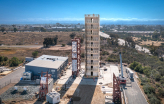Using Bacteria as Living Test Tubes to Study Human Gene Mutations and Find New Drug Leads
Health & BehaviorTraditional methods of studying human gene mutations are often laborious and costly. Now bioengineers at UC San Diego have developed a new simple approach to rapidly check on human gene changes and also screen chemicals as potential drugs by turning everyday bacteria into living test tubes.




















